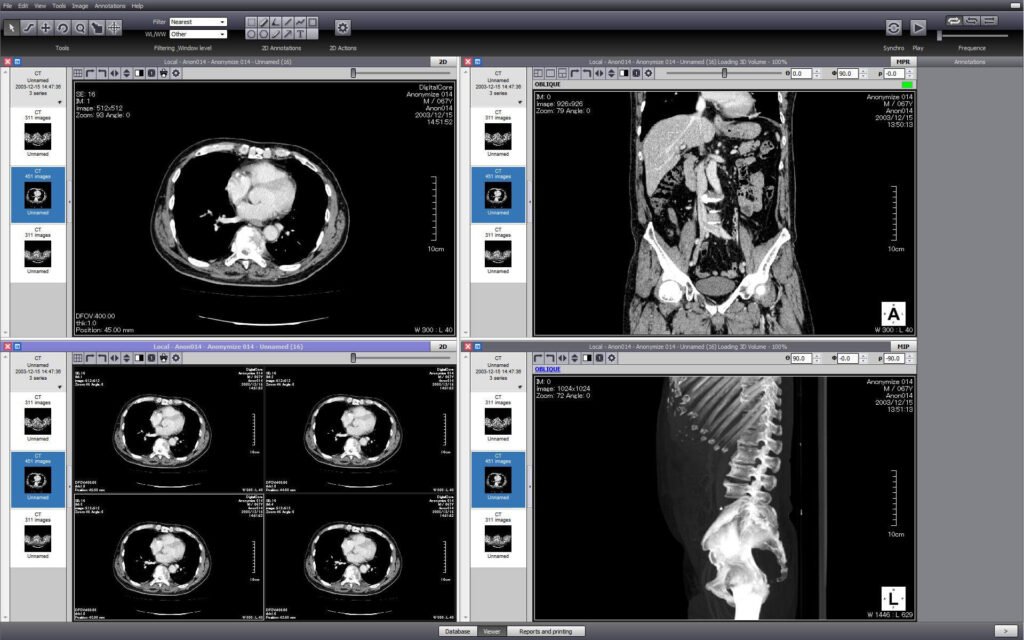In the modern healthcare landscape, the ability to view DICOM images online has revolutionized the way medical professionals access and interpret medical imaging. However, this convenience also brings significant data security challenges.
How can you ensure that sensitive patient information remains protected while benefiting from online image access? Let’s explore the essential strategies and best practices to keep your data secure.
Understanding the Importance of Data Security in Medical Imaging
Medical imaging data, particularly DICOM (Digital Imaging and Communications in Medicine) images, contains highly sensitive patient information. Unauthorized access or breaches can lead to severe consequences, including identity theft, loss of patient trust, and legal repercussions.
Did you know? According to a 2022 report by the Ponemon Institute, the average cost of a healthcare data breach is nearly $10 million. This highlights the critical need for robust data security measures.
Implementing Secure Access Controls
User Authentication
User authentication is the first line of defense. Ensure that only authorized personnel can access DICOM images by implementing multi-factor authentication (MFA). This typically involves something the user knows (a password) and something the user has (a smartphone or security token).
Fact: Multi-factor authentication can prevent up to 99.9% of automated attacks.
Role-Based Access Control (RBAC)
Role-Based Access Control ensures that users have access only to the data necessary for their role. This minimizes the risk of unauthorized access and potential data breaches.
Example: A radiologist may have full access to imaging data, while administrative staff might only need access to scheduling information.
Securing Data Transmission
Encryption
Encrypting DICOM images during transmission is crucial. Use TLS (Transport Layer Security) protocols to encrypt data as it travels over the internet. This prevents hackers from intercepting and reading the data.
Important: Ensure that both the sending and receiving ends support and enforce encryption.
Virtual Private Networks (VPNs)
Using a VPN adds an extra layer of security by creating a secure tunnel for data transmission. This is especially useful when accessing DICOM images from remote locations.
Did you know? VPNs can significantly reduce the risk of data interception, particularly over public Wi-Fi networks.
Ensuring Secure Storage
Encrypted Storage
Storing DICOM images in an encrypted format protects data at rest. Even if unauthorized access occurs, the data remains unreadable without the decryption key.
Regular Audits and Monitoring
Audit access logs regularly and monitor for unusual activity. Setting up alerts for unauthorized access attempts can help you respond quickly to potential security breaches.
Pro Tip: Use automated tools to assist with monitoring and auditing to ensure consistency and accuracy.

Utilizing Secure Viewing Platforms
Certified Platforms
When choosing an online platform to view DICOM images, ensure it complies with relevant regulations such as HIPAA (Health Insurance Portability and Accountability Act) in the US or GDPR (General Data Protection Regulation) in Europe.
Fact: Platforms certified under these regulations adhere to stringent data security and privacy standards.
Secure Viewing Sessions
Ensure that viewing sessions are secure and time-limited. Automatically log out users after a period of inactivity to prevent unauthorized access.
Important: Always verify that the platform uses secure connection protocols (e.g., HTTPS).
Training and Education
Staff Training
Regularly train staff on data security best practices. Educate them on the importance of protecting patient data and the specific measures they can take.
Phishing Awareness
Phishing attacks are a common way for hackers to gain access to secure systems. Train staff to recognize and report phishing attempts.
Fact: According to a report by Verizon, 22% of data breaches in 2021 involved phishing.
Conclusion
Ensuring data security while viewing DICOM images online is non-negotiable in today’s digital age.
Remember: Data security is an ongoing process. Review and update your security measures regularly to stay ahead of potential threats.
Here’s a quick summary of the key steps you should take:
| Step | Action |
| User Authentication | Implement multi-factor authentication to secure access. |
| Role-Based Access Control | Ensure users have access only to the data necessary for their role. |
| Encryption | Encrypt data during transmission and storage. |
| VPNs | Use VPNs for secure data transmission, especially from remote locations. |
| Regular Audits | Conduct regular audits and monitor access logs for unusual activity. |










